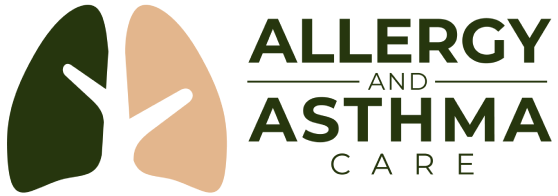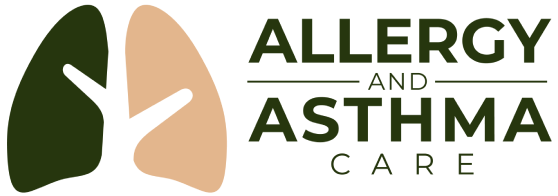Asthma is a chronic inflammation of the lungs in which the airways (bronchi) are reversibly narrowed. Asthma affects 7% of the population, and 300 million worldwide. During attacks (exacerbations), the smooth muscle cells in the bronchi constrict, and the airways become inflamed and swollen. Breathing becomes difficult, and asthma causes 4,000 deaths a year in the U.S. Attacks can be prevented by avoiding triggering factors and by drug treatment. Drugs are used for acute attacks, commonly inhaled beta-2 agonists. In more serious cases, drugs are used for long-term prevention, starting with inhaled corticosteroids, and then long-acting β2-agonists if necessary. Leukotriene antagonists are less effective than corticosteroids but have minimal side effects. Monoclonal antibodies such as mepolizumab and omalizumab are sometimes effective. Prognosis is good with treatment.
Asthma is a lung condition that causes wheezing, coughing, and shortness of breath. It is caused by inflammation (swelling) of the lining of the airways in your lungs. Asthma is a chronic condition, which means you may have it the rest of your life.
You may start coughing or wheezing when you breathe in irritants or something you are allergic to. Cold air, chemicals, perfume, and smoke are examples of irritants. Examples of things you might be allergic to, called allergens, are dust mites, pollen, molds, and animal dander. A cold or the flu might also bring on an asthma attack.
Some people have coughing or wheezing only during or after physical activity. This is called exercise-induced bronchoconstriction (EIB).
Asthma may be mild, moderate, or severe. An asthma attack may last a few minutes or for days. Attacks can happen anywhere and at any time. Severe asthma attacks can be fatal. It is very important to get prompt treatment for asthma attacks and to learn to manage your asthma so you can live a healthy, active life.
About 20 million Americans have asthma, and the number of people who have asthma is increasing worldwide.
If you have asthma, the airways in your lungs are always somewhat inflamed, even when you do not have any symptoms. When your airways are exposed to irritants or allergens, the airways become more swollen and make more mucus. The tiny muscles in the walls of the airways contract. These reactions cause the airway openings to become smaller, making it harder for air to move in and out. Wheezing is the sound of air moving through the narrowed air passages. The extra mucus in the airways causes coughing.
Some of the factors that may increase the risk of developing asthma are:
- low birth weight
- having one or more close family members who have asthma
- exposure to secondhand smoke or a lot of environmental pollutants (for example, in a large city)
- on-the-job exposure to chemicals, such as the chemicals used in the manufacturing industry, farming, and hairdressing
- obesity.
Most common symptoms are:
- wheezing (a high-pitched whistling sound when you breathe in or out)
- coughing
- shortness of breath, or feeling like you cannot get enough air
- chest tightness
You may find that there are things you used to do that you can no longer do because of your trouble with breathing.
How is it diagnosed?
A single attack of wheezing does not mean you have asthma. Some infections and chemicals can cause wheezing that lasts for a short time and then does not happen again. We will ask about your history of breathing problems. You will have a physical exam. You may have one or more breathing tests. You may be tested before and after taking medicine to see how your symptoms respond to medicine.
The goal of treatment is to allow you to live a normal, active life. Proper treatment can reduce your day-to-day asthma problems as well as the chance that you will have a bad asthma attack or more problems in the future. Treatment will probably include prescribed medicines and the removal of obvious allergy-causing substances or irritants from your home.
Two types of medicines are used to control asthma:
- quick-relief medicines
- long-term-control medicines
Quick-relief medicines (also called reliever, rescue, or quick-acting medicines)
Albuterol, Levalbuterol and Pirbuterol are the generic names of the most widely used quick-relief medicines. It is a type of medicine called a bronchodilator. Bronchodilators relax the muscles in the airways. When the muscles are relaxed, the airways become larger, so there is more space for air to move in and out. You inhale the medicine by breathing it into your lungs as you spray it into your mouth. You use this medicine when you start to have an asthma attack. In some cases your provider may recommend that you use it on a regular schedule.
You should always carry a bronchodilator with you to use when you begin to wheeze.
Steroid medicines are used for prolonged, severe attacks.
Steroids are another type of medicine that may be used to control asthma symptoms. They are a type of anti-inflammatory medicine that is often used for treatment of a bad attack that has not responded to other treatment. The medicine is usually prednisone and you are usually given between 4 and 10 days of the steroid tablets to take with your other medicines to get your asthma back under control.
Long-term control-medicines (also called controller medicines)
In addition to using a quick-relief bronchodilator when you have asthma attacks, you may need to combine different types of long-term control medicines for the best control of your wheezing. Several types of medicines help prevent asthma attacks. These medicines are now considered the best and safest way to have long-term control of asthma. They help reduce the inflammation in your airways. They are taken on a regular schedule whether or not you are having symptoms.
Long-term-control medicine should be used all the time for year-round asthma. For seasonal asthma, we may instruct you to take a long-term-control medicine just during the months when you usually have asthma symptoms. The medicine does not work well if you start and stop it frequently, for example, every week or two.
Long-term-control medicines cannot stop attacks of wheezing after you have started wheezing. You must use a quick-relief medicine, such as albuterol, levalbuterol or pirbuterol when you are wheezing.
The goals of controller medicines are to:
The medicines used most often for long-term control of asthma are:
- a long-acting, inhaled bronchodilator called salmeterol (Serevent) and formoterol (Foradil) used 2 times a day (never to be be used without an inhaled steroid
- inhaled steroids
- a type of medicine called leukotriene modifiers, including zafirlukast (Accolate), zileuton (Zyflo), or montelukast (Singulair) pills taken daily.
Some of these medicines are available as combinations.
Other controller medicines include:
- theophylline, a pill often taken at bedtime to prevent nighttime wheezing.
- cromolyn or nedocromil, inhaled 3 to 4 times a day (no longer available).
If you have severe persistent asthma, we may prescribe low-dose oral steroids for long-term control of the asthma. This medicine may be taken as tablets or a syrup.
You need to work closely with your allergist to find the treatment right for you. Make sure you understand how to use each of your medicines. Some are quick-acting and meant to be used when you have an asthma attack. Others are slow acting and help prevent attacks but they do not help when you are having an attack.
Inhalers
Make sure you know how to use your inhaler correctly. Some inhalers work best if you hold them 2 inches in front of your mouth when you spray. This helps the medicine get to your lungs rather than getting stuck in your mouth. However, for some inhalers you do need to put your mouth on the inhaler.
If you have an inhaler that should be used a couple of inches in front of your mouth and it is hard for you to hold the inhaler in the right position, ask your healthcare provider for a spacer tube. You can put one end of the spacer in your mouth and attach the inhaler to the other end. This allows you to breathe in slowly and fully and to inhale more of the asthma medicine.
Be sure you ask us or your pharmacist on how your inhalers are supposed to be used. Read the directions that come with the inhalers. Also ask your pharmacist how you can know when your inhaler is empty so you can avoid getting caught without medicine.
Asthma is a chronic condition, even though you might not have any symptoms for decades. Asthma is more common in children than adults. People who had asthma as children often have no symptoms once they become adults, but the symptoms may come back later in life. Asthma that develops for the first time in mid- or late life usually continues to be a problem for the rest of your life.
Learn to recognize signs and symptoms of an asthma attack. Many people with asthma either don’t recognize their asthma symptoms or underestimate the severity of their symptoms. Pay attention to your symptoms and, if your healthcare provider recommends it, check your breathing with a peak flow meter.
Work with us to develop a written asthma action plan. Following the plan will help you manage your asthma every day. It will help you recognize and handle asthma problems.
Take your medicines exactly as prescribed. Always have your rescue medicine on hand and available. If you are taking a long-term-controller medicine, be sure to take it every day, just as your provider tells you. This prevents asthma attacks. If you are having wheezing even though you are using your controller medicines, let your healthcare provider know. Don’t just stop them.
Learn what can trigger your symptoms and how to stay away from them. For example, you may need to cover your mattress, box springs, and pillows with zippered vinyl covers. It may help to stay indoors when the humidity or pollen count is high. Avoid cigarette smoke.
You should also:
- See us for regular checkups as often as recommended
- Ask your provider if it is OK for you to take aspirin and other non-steroidal anti-inflammatory medication, such as ibuprofen or naproxen . You may take Acetaminophen (Tylenol) at low dosages.
- Get a flu vaccine every October.
If you often have problems with acid indigestion–a condition called gastroesophageal reflux disease, or GERD–your asthma symptoms may increase, especially at night. When you have GERD, stomach acid flows backward into the throat, irritating the upper airway and causing heartburn. If you have heartburn often, talk to your healthcare provider about it. Your provider may prescribe a medicine that reduces the acid in your stomach to help relieve GERD and asthma symptoms. You can also prevent or relieve symptoms of GERD by:
- losing weight if you are overweight
- sleeping with your head elevated at least 4 inches
Asthma can be a life-threatening condition. If your medicines do not seem to be working to keep you breathing comfortably, contact Allergy and Asthma Care. If you are having an asthma attack and using your rescue inhaler has not relieved your symptoms, you must get medical care right away. This may mean going to the emergency room or calling 911.


